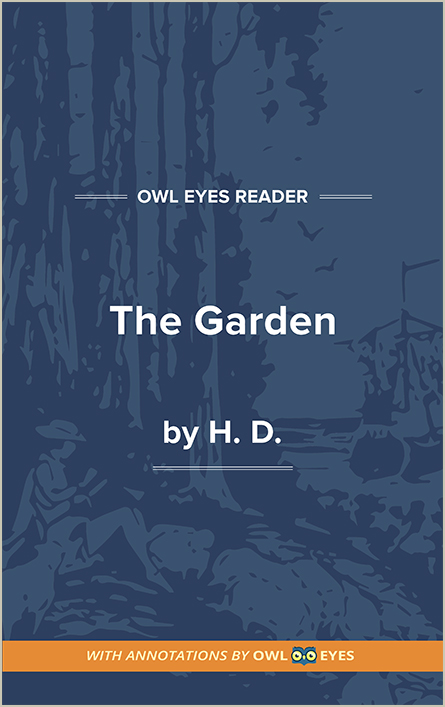Analysis Pages
Historical Context in The Garden
The Imagist Movement: Hilda (H.D.) Doolittle was an American poet who helped to found the Imagist movement, an important movement in early 20th-century poetry that favored clear, sharp language and precise images. The Imagist movement was especially important as it gave way to modernism in American literature. A key tactic in the Imagist movement was to focus on a single image of a single clear idea and expand on it to reveal its essence. Favoring a directness of presentation and an economy of language, many authors also experimented with non-traditional structures and voice.
H.D.’s Legacy: H.D. was very open about her bisexuality, dating both men and women during her lifetime. After her death in 1961, her works were rediscovered by members of feminist and LGBT movements, who claimed H.D. as an icon. Some scholars have reread her work through a feminist lens and found new meanings. In the case of “The Garden,” a feminist critique would identify the force rendering the speaker immobile as the stifling air of patriarchy. The poem was interpreted as a commentary about oppressive forces on marginalized groups.
Historical Context Examples in The Garden:
The Garden
🔒"rock..." See in text (The Garden)

